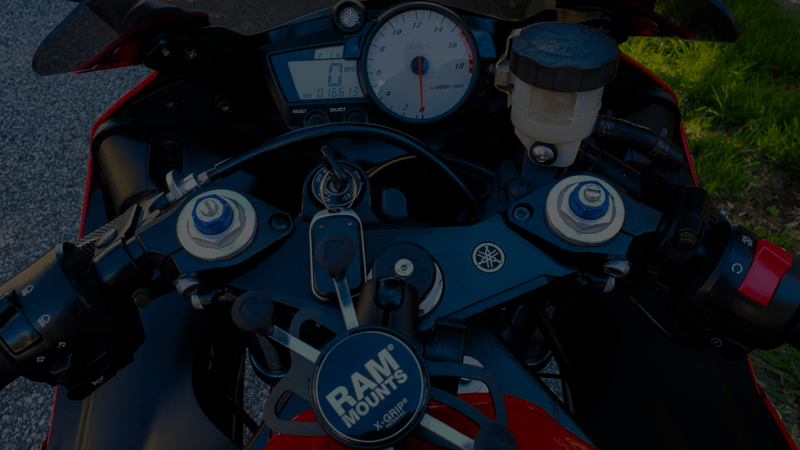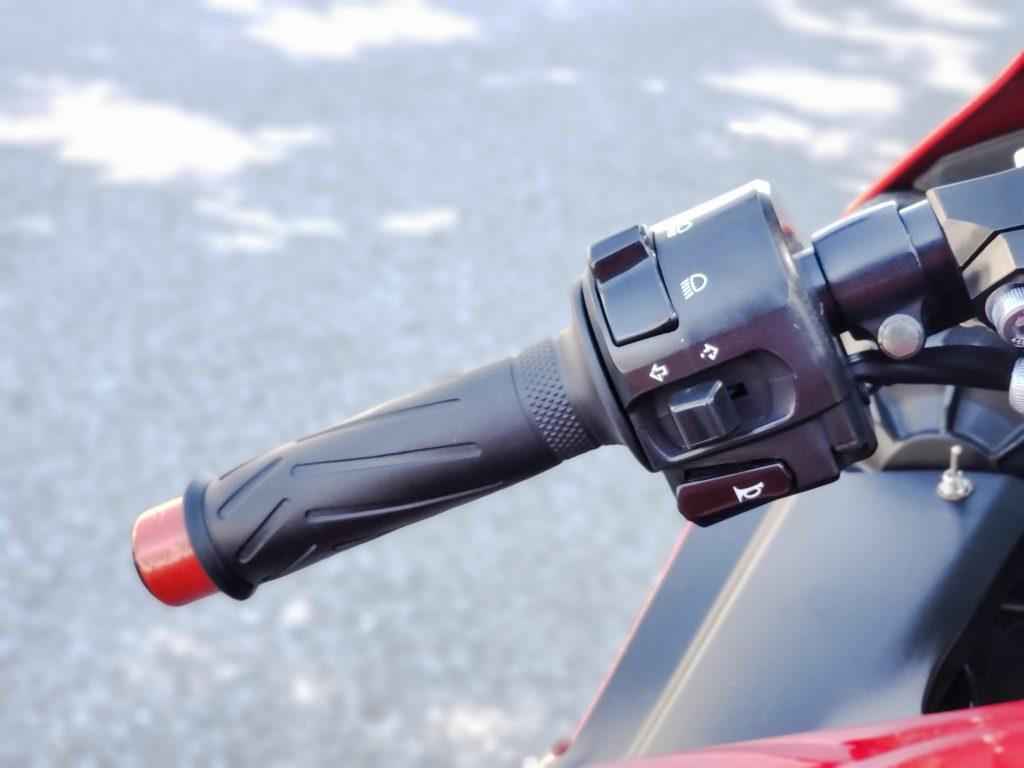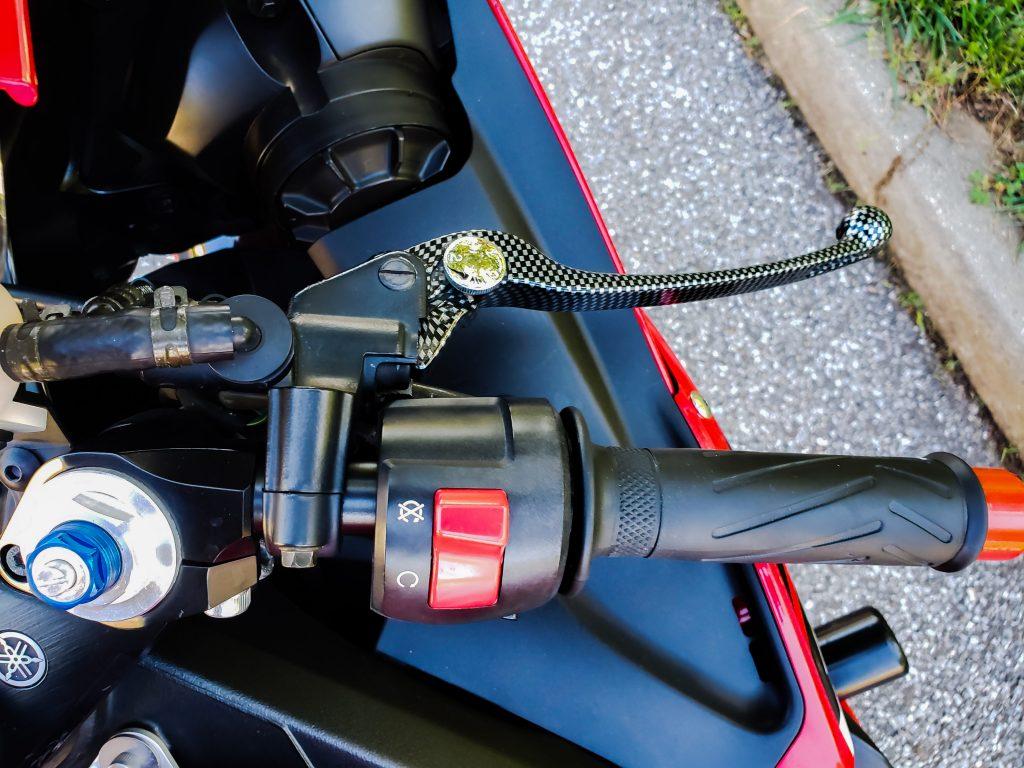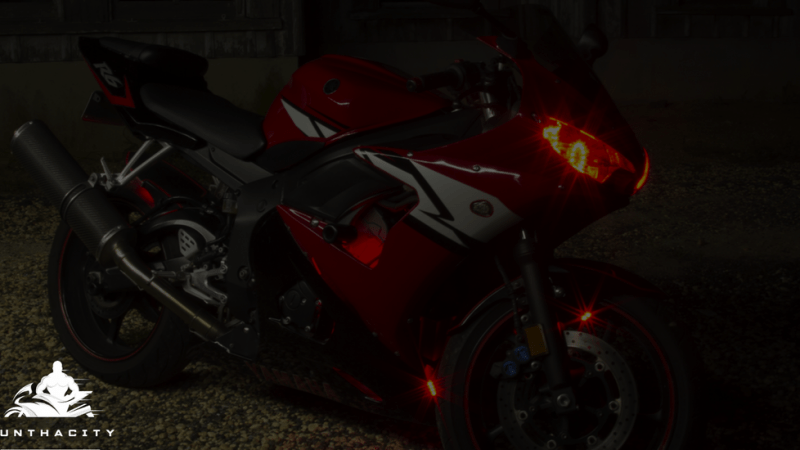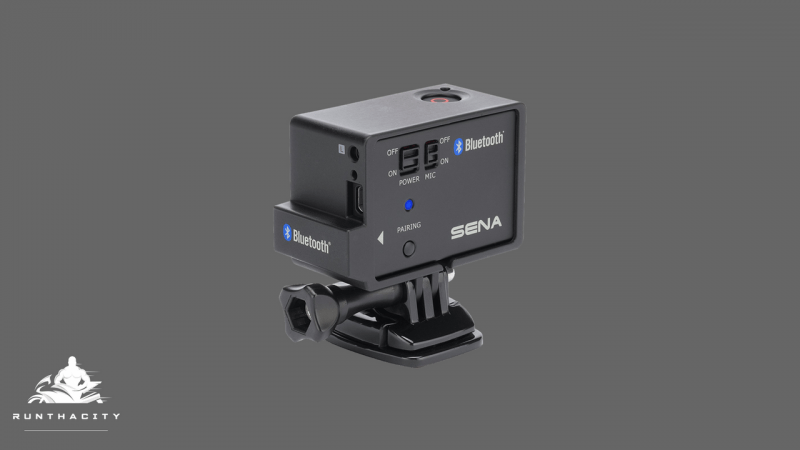In the ever-evolving world of motorcycle gear, Bluetooth technology has become an increasingly desired feature for helmets. Gone are the days of fumbling with earpieces or missing calls while riding. Today’s Bluetooth motorcycle helmets seamlessly integrate communication, entertainment, and safety features, enhancing your riding experience in numerous ways.
Key Takeaways:
- Safety First: DOT and ECE certifications are crucial, and professional installation is recommended for adding Bluetooth to non-equipped helmets.
- Feature Balance: Consider factors like noise cancellation, communication range, and desired functionalities to match your riding style.
- Expert Guidance: Consult motorcycle gear experts for personalized recommendations based on your needs and budget.
Comparison Table: Top Bluetooth Motorcycle Helmets (Note: Prices are subject to change)
Feature | Sena Impulse | Sena Stryker | ScorpionEXO AT960 | ILM 902BT/902BT PRO | ILM 159BT |
|---|---|---|---|---|---|
| Type | Modular | Full-Face | Modular | Modular | Modular |
| Price | $599-$699 | $599-$699 | $449 | $199 | $179 |
| Communication | Mesh intercom (2.4 miles) | Bluetooth 5.1 | Intercom (1 mile) | Intercom (1000 ft) | Intercom (1000 ft) |
| Noise Cancellation | Excellent | Superior | Good | N/A | N/A |
| Special Features | Harman Kardon speakers, MP3 player | Voice control | Integrated alarm system | FM radio, MP3 player | Group intercom (up to 3 riders) |
Benefits of Bluetooth Motorcycle Helmets:
- Enhanced Safety: Staying connected hands-free allows you to answer calls, receive navigation instructions, or communicate with fellow riders without compromising your focus on the road.
- Convenience: Listen to music, enjoy podcasts, or utilize voice commands for added ease while riding.
- Improved Group Communication: For group rides, Bluetooth intercom systems enable clear communication between riders, enhancing the overall riding experience.
Choosing the Right Helmet:
Selecting a Bluetooth motorcycle helmet requires careful consideration beyond just the presence of Bluetooth connectivity. Here are some key factors to prioritize:
- Safety Certifications: Ensure the helmet meets the safety standards set by reputable organizations like the Department of Transportation (DOT) or the Economic Commission for Europe (ECE).
- Comfort: A well-fitting helmet is crucial for long rides. Look for helmets with adjustable features and comfortable padding.
- Noise Cancellation: Effective noise cancellation reduces wind noise and engine roar, allowing for clearer communication and a more enjoyable ride.
- Battery Life: Consider how long the battery lasts on a single charge, especially for longer journeys.
- Communication Features: Explore the type of Bluetooth system offered (universal pairing, intercom capabilities, range).
- Additional Features: Some helmets may include extras like voice control, built-in sun visors, or mobile device connectivity.
Review Methodology:
The following reviews are based on a comprehensive analysis of information gathered from:
- Manufacturer specifications and listed features.
- Expert reviews published by reputable motorcycle gear websites and publications.
- User feedback and ratings on trusted e-commerce platforms and motorcycle forums.
Top Helmet Picks:
Specifications:
- DOT-approved
- Flip-up modular design
- Integrated mesh intercom system (up to 2.4 miles range)
- Harman Kardon speakers and microphone
- MP3 player, voice dial capability
- Weight: 4.2 lbs (1.9 kg)
No products found.
- Expert Reviews: Praised for its comfortable modular design, excellent audio quality by Harman Kardon, and long-range mesh intercom system. Some reviewers noted the battery life could be improved for extended rides.
- User Reviews: Users appreciate the modular design, clear communication, and ease of use. A few users mentioned wind noise concerns at higher speeds.
- Specifications:
- DOT-approved
- Full-face helmet design
- Bluetooth 5.1 connectivity
- Advanced noise cancellation
- Integrated speakers and microphone
- Voice control functionality
- Weight: 4.5 lbs (2.0 kg)
No products found.
- Expert Reviews: Experts commend the Stryker’s superior noise cancellation, voice control features, and sleek design. A few reviewers found the price point to be on the higher end.
- User Reviews: Riders acknowledge the exceptional noise cancellation, voice command functionality, and comfortable fit. Some users commented on the bulkier feel compared to other options.
3. ScorpionEXO AT960 Modular Adventure Street Helmet:
- Specifications:
- DOT and ECE certified
- Modular adventure helmet design
- Integrated EXO-COM Bluetooth communication system (up to 1 mile range)
- Aerodynamic shell design for reduced wind noise
- Sun visor, multiple vents for improved airflow
- Weight: 5.2 lbs (2.3 kg)
No products found.
- Expert Reviews: Appreciated for its versatility as an adventure helmet, integrated communication system, and aerodynamic design. Some reviewers mentioned the weight could be a concern for long rides.
- User Reviews: Riders favor the helmet’s functionality for adventure riding, built-in communication system, and comfortable fit. A few users noted occasional connectivity issues with the Bluetooth system.
4. ILM Bluetooth Motorcycle Helmet (Model 902BT/902BT PRO):
- Specifications:
- DOT-approved
- Modular flip-up design
- Bluetooth intercom system (up to 1000 feet range)
- FM radio, MP3 player
- Dual visor system
- Weight: 4.0 lbs (1.8 kg)
No products found.
- Expert Reviews: Limited information available from established reviewers. However, some sources acknowledge its affordability, built-in radio and MP3 player features.
- User Reviews: Users find the helmet to be a budget-friendly option with basic communication features. Some reviews mention concerns regarding durability and noise isolation.
5. ILM Bluetooth Motorcycle Helmet (Model 159BT):
- Specifications:
- DOT-approved
- Modular flip-up design
- Bluetooth intercom system for up to 3 riders (up to 1000 feet range)
- FM radio
- Dual visor system
- Weight: 4.1 lbs (1.8 kg)
No products found.
- Expert Reviews: Similar to the previous ILM model, extensive reviews from established sources are limited. However, affordability and multi-rider intercom system are mentioned as potential positives.
- User Reviews: Riders acknowledge the advantage of group communication for the price point. Similar to the previous ILM model, concerns regarding durability and noise isolation are mentioned in some user reviews.
Comparative Analysis:
- Overall Communication: Sena Impulse and Sena Stryker offer superior range and intercom features compared to the other options.
- Noise Cancellation: Sena Stryker excels in this area, followed by the ScorpionEXO AT960.
- Weight: ILM models are lighter options, while the ScorpionEXO AT960 is heavier due to its adventure-oriented design.
- Additional Features: Sena Stryker boasts voice control, while ILM models include FM radio and MP3 player.
Remember: This review section provides a general overview based on available information and should not be the sole factor in selecting your helmet.
It is crucial to prioritize safety certifications (DOT, ECE) and consult with motorcycle gear experts to find the helmet that best suits your riding style, needs, and budget.
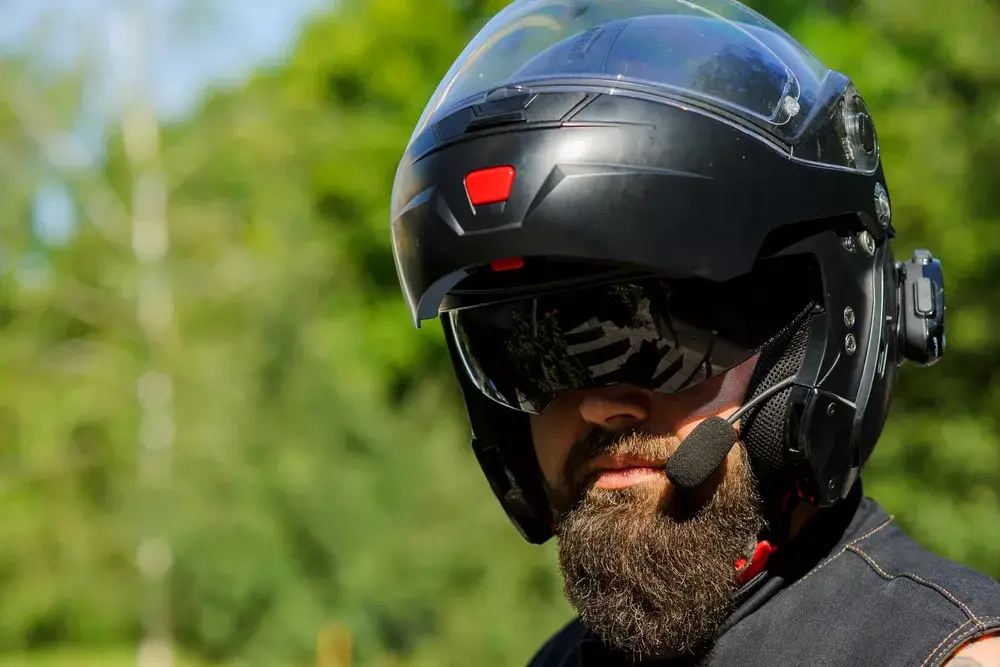
Beyond the Basics: Unveiling Lesser-Known Advantages of Bluetooth Helmets
Beyond the Basics: Unveiling Lesser-Known Advantages of Bluetooth Helmets
While improved communication and entertainment are well-established benefits of Bluetooth motorcycle helmets, there are other unique advantages to consider:
Enhanced Group Communication for Motorcycle Tours: Bluetooth intercom systems allow riders within a specific range to communicate clearly, facilitating coordination, sharing navigational updates, or simply enjoying conversation during group rides. This can significantly enhance the overall touring experience.
Real-Time Security Updates through Motorcycle Alarm Integration: Certain Bluetooth helmets can connect with compatible motorcycle alarms, enabling riders to receive notifications on their helmet’s display in case of potential security breaches or attempted tampering with their motorcycle. This provides real-time awareness and allows for a quicker response.
Fitness Tracking Integration for Monitoring Vitals: A growing number of Bluetooth helmets offer the ability to pair with fitness trackers. This allows riders to monitor their heart rate, blood pressure, and other vitals during the ride. This data can be valuable for maintaining physical awareness and making informed decisions during long journeys.
Addressing Common Concerns: Battery Life and Safety
Battery Life:
Maximizing Battery Life:
- Reducing Bluetooth connections to essential devices.
- Turning off features like FM radio or music streaming when not in use.
- Adjusting the speaker volume to a moderate level.
Extending Battery Life for Long Rides:
- Carrying a portable power bank for on-the-go charging.
- Investing in a helmet with a replaceable battery.
- Opting for helmets with efficient power management features.
Impact on Safety:
- Potential Distractions: While Bluetooth helmets offer undeniable benefits, it’s crucial to prioritize safe riding practices.
- Minimize distractions: Avoid excessive communication or engaging with features that take your attention away from the road.
- Focus on the Road: Remain alert and prioritize situational awareness while riding.
Remember:
- Bluetooth features should complement your ride, not replace safe riding habits.
- Always prioritize maintaining full focus on the road and potential hazards.
Disclaimer:
- The information provided regarding fitness tracker integration and motorcycle alarm connectivity is based on the evolving capabilities of certain Bluetooth helmet models. Not all helmets possess these features.
It’s vital to consult with motorcycle gear experts and prioritize safety certifications (DOT, ECE) when selecting a helmet.
Installation Considerations: Safety First!
While the previous sections explored various Bluetooth motorcycle helmets, it’s crucial to address the critical aspect of installation.
Safety Disclaimer:
Equipping a non-Bluetooth helmet with an aftermarket communication system can compromise the helmet’s integrity and potentially affect its safety certifications. Therefore, I strongly recommend seeking professional installation from a certified technician to ensure proper integration and maintain the helmet’s protective capabilities.
Personal Experience:
In my own riding experience, I’ve experimented with adding a budget-friendly ($100) Bluetooth system to a helmet. While it offered basic functionality, the sound quality was poor, communication range was limited, and the overall experience fell short of expectations. Upgrading to a more reputable brand (around $300) resulted in a significant improvement. The audio quality was crisp, the intercom range increased noticeably, and the overall user experience was much smoother.
This personal example highlights the importance of considering quality and potential safety implications when dealing with aftermarket helmet modifications.
General Information (for informational purposes only):
It’s important to understand that adding Bluetooth to a non-equipped helmet involves:
- Disassembling the helmet liner: This may require specialized tools and knowledge to avoid damaging the helmet’s components.
- Mounting the speakers and microphone: Proper placement is crucial for optimal audio quality and comfort.
- Connecting the wiring: Incorrect wiring can lead to malfunctions or even electrical hazards.
Remember:
- Due to the potential risks involved, this section is solely for informational purposes and should not be interpreted as a guide for self-installation.
- Always prioritize safety and consult with a certified professional for any modifications to your motorcycle helmet.
6 FAQs: Choosing the Right Bluetooth Motorcycle Helmet
Conclusion: Finding the Perfect Fit – Safety, Functionality, and You
The world of Bluetooth motorcycle helmets offers a plethora of features and functionalities to enhance your ride. From crystal-clear communication to convenient music streaming, these helmets have revolutionized the riding experience.
This article explored various helmet options, highlighting factors like safety certifications, comfort, noise cancellation, and unique features like group communication and fitness tracker integration.
Remember, the key takeaway is to prioritize safety first.
- DOT and ECE certifications are essential for ensuring your helmet meets rigorous safety standards.
- Professional installation is crucial when adding Bluetooth systems to non-equipped helmets to maintain the helmet’s integrity and safety certifications.
Finding the right helmet involves striking a balance between:
- Safety: Always prioritize helmets with the necessary certifications.
- Functionality: Consider the features that best suit your riding style and needs.
- Personal Preferences: Comfort, weight, and noise cancellation are essential factors for a pleasurable riding experience.
Beyond the information provided here, conducting further research and consulting with motorcycle gear experts is vital. Their experience can guide you towards a helmet that aligns perfectly with your safety requirements, riding style, and budget.
Never compromise safety for convenience. Choose a Bluetooth motorcycle helmet that empowers you to ride confidently and enjoy the journey, while always prioritizing your well-being on the road.
You Might also like
-
Motorcycle Basics: Before You Start Riding
Before even hopping on a motorcycle, it’s a smart decision to ride about the mechanics of the machine and familiarize yourself with key concepts. Having an idea in your head is going to come in handy when you’re faced with common beginner problems or later on when you’re on the road.
That’s how you really get a handle on the motorcycle. Let’s get started.Motorcycle Basic Controls
Most motorcycles have the same controls; but you should always check the owner’s manual since the locations and shapes of some features will vary between makes and models.
motorcycle controls indicators and equipment Motorcycle basic parts:
Handlebars
Right side:
- Electric start button – usually yellow or white.
- Engine cut-off switch – above the electric start button. Usually red.
- Above the right throttle is the front brake lever.
Left side:
- Horn
- Indicators (blinkers)
- Choke
- Headlight dip switch (high beams/low)
- Clutch lever.
Between the handlebars, you find the ignition key. Ahead of the handlebars, you will also see the speedometer, odometer, and the tachometer.
motorcycle handlebar controls motorcycle throttle Older Styles and Off-Road Bikes
Here’s some special considerations if you are on an older model or have an off-road bike:
Fuel petcock – these are usually attached to the left near the carburetor. You can lean down to switch the gas tank when the fuel is getting low and you need to get to the gas station ASAP.Kick starter – off-road bikes have kick starters more commonly than street bikes. The kick starter works when you push down on the lever, turning the engine crank and causing the pistons to put pressure against the spark plug. Fuel ignites to start the engine.
What To Check Before Your Ride Every Time
Professional schools throughout the country use the acronym T-CLOCs to help you remember what you should check before heading on your bike. These checks should be done at least once a year, depending on how often you are riding your bike. If you ride every single day, you will have to use T-CLOCs much more often.
- T – Tires
- C – (Main) Controls
- L – Lights & other controls
- O – Oil & other fluids
- C – Chassis
- S – Stands
Tires
Check the air pressure and look at the condition of the tires. Are they worn down? Cracking? What is the condition of the spokes? Do you note any air leakage?
Next, look at the rims, bearings, seals, and casts. Does each brake work as it should? Does the bike fight you when turning or slowing down?
Controls
The main controls include the handlebars, cables, hoses, levels, pedals, and throttle. Make sure the condition of the hoses is good and that everything is properly lubricated. The bars should be straight, and the throttle should move without resistance. Ensure the hoses aren’t cut or leaking. Any bulges, chafing, cracks or fraying of control cables needs to be repaired.
Lights & Other Controls
This includes the battery, wiring, tail and signal lights, switches, blinkers, headlight, and reflectors. Is everything illuminating? Do the blinkers flash right? Is fraying or kinks in the wiring? Are the beams strong enough in the dark?
Oil & Other Fluids
Check the gaskets and seals for any leaks. Ensure the oil level is good, along with other fluid levels. Check for sediment in the coolant reservoir.
Chassis
The chassis is made up of the frame, suspension, chains, belts, and fasteners. Nothing should rattle. Nothing should be frayed, cracking, peeling, or chipping. Ensure that everything is tight and that there is tension in the belts and chains.
Stands
Check for cracks or bends in the stands. Springs should hold their position without looseness.
Basic Mechanics of a Motorcycle
Being that a motorcycle rides on two wheels, it is designed to lean to either side. Through balance and input from the ride, the motorcycle maintains an upright position. Many beginners are afraid that the bike is going to fall over if they lean too far, but that’s not the case. Through the forces of physics, such as friction, momentum, and gravity, it’s nearly impossible for a bike that’s going to straight to fall over.
Engine
Another reason the motorcycle stays upright is the force of the pistons in the engine. These pistons move up and down, creating a force that helps the moving bike maintain it’s upward position.
Tires
The tires of motorcycles are designed to be rounded, ensuring that as the bike rounds a corner, the same surface area of the tire remains on the ground.
Chassis
For the beginner, all you need to know about the chassis is how to sit properly. When positioned properly on the bike, your wrists, knees, and back will be comfortable. You should also be able to engage your core and thigh muscles when using your body to maneuver.
Clutch
Most bikes are manual transmission. The clutch keeps the bike moving but also controls the speed by using friction. Clutches are usually bathed in the same oiled the engine uses, so if you ride the clutch for a while, you won’t cause damage. However, some bikes are different, so refer to the owner’s manual.
Wrapping It Up
For the new rider, your focus should be memorizing where the controls are and what certain parts of the bike do. By learning the general location, you can drive much more safely (and not while staring at the handlebars).
Remember, the everything takes practice. In the same way you learned to ride a bicycle, you need some patience with riding a motorcycle. With that, you’re ready to begin!
Liked this article? Want more beginner’s tips? Subscribe to my YouTube channel to get notifications about the latest videos and never miss out.
-
My First Motovlog
Hi Everyone! This is my first motovlog! I’m riding a 2004 Yamaha YZF-R6. Don’t forget to subscribe and comment!!
Read More -
Sena GP10 Bluetooth Pack for the GoPro Review
If you have always wanted to record turn-by-turn commentary on your rides and you use a GoPro Hero 3 or 4 to record, the Sena GP10 Bluetooth pack is a must-have accessory. The “BacPac” allows you to record narration in real time using Sena’s “Ultra HD Voice Recording” mode or the “Normal” mode. You can even combine voices from other intercom users so the entire conversation can be used as an overlay voice-over. Download the Sena GP10 User Guide Here

